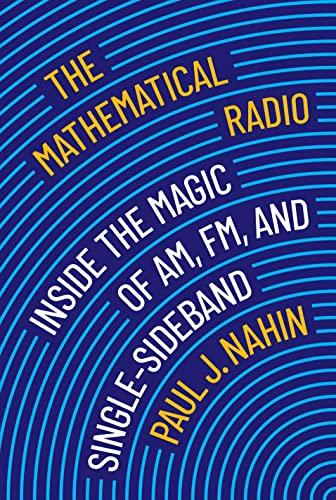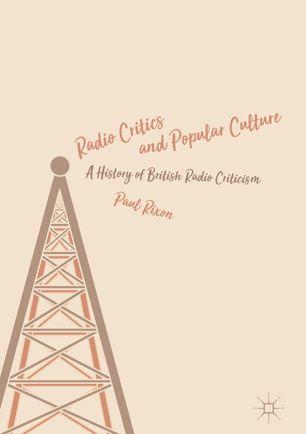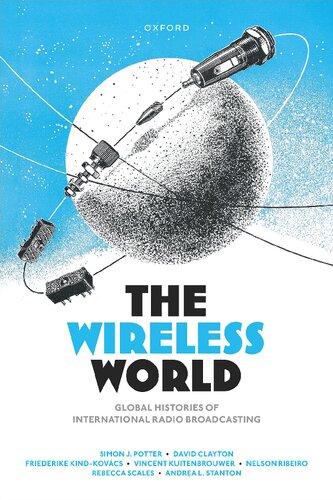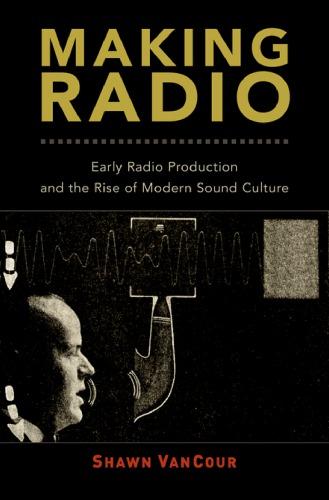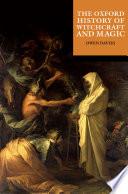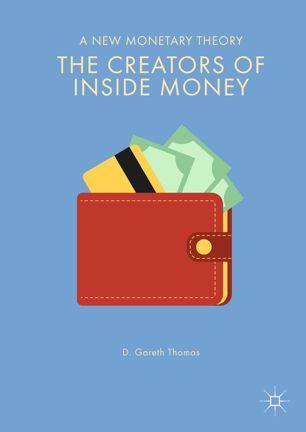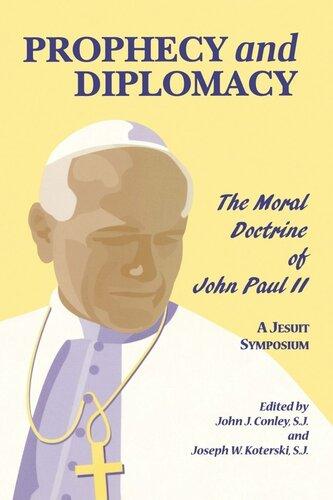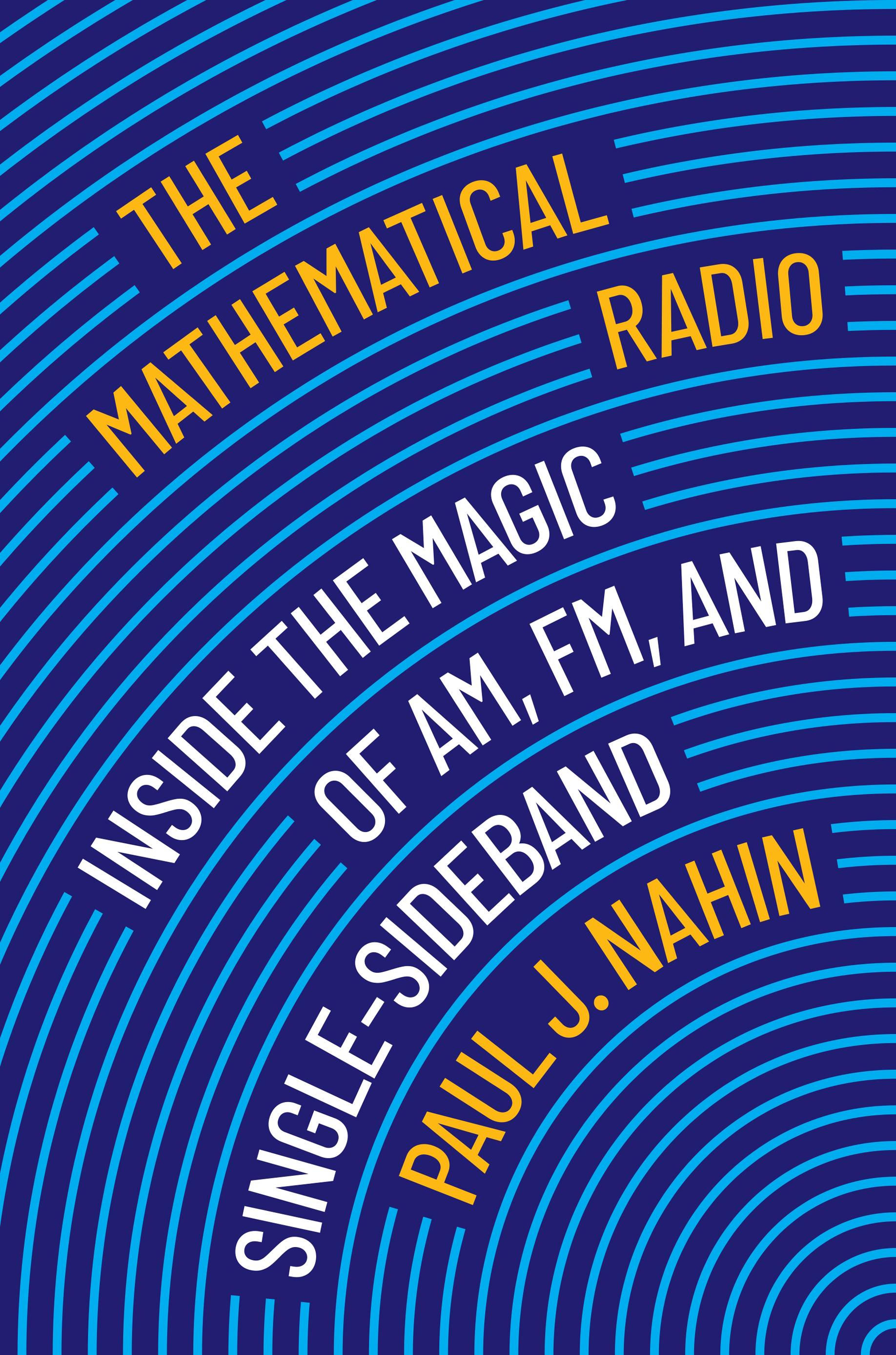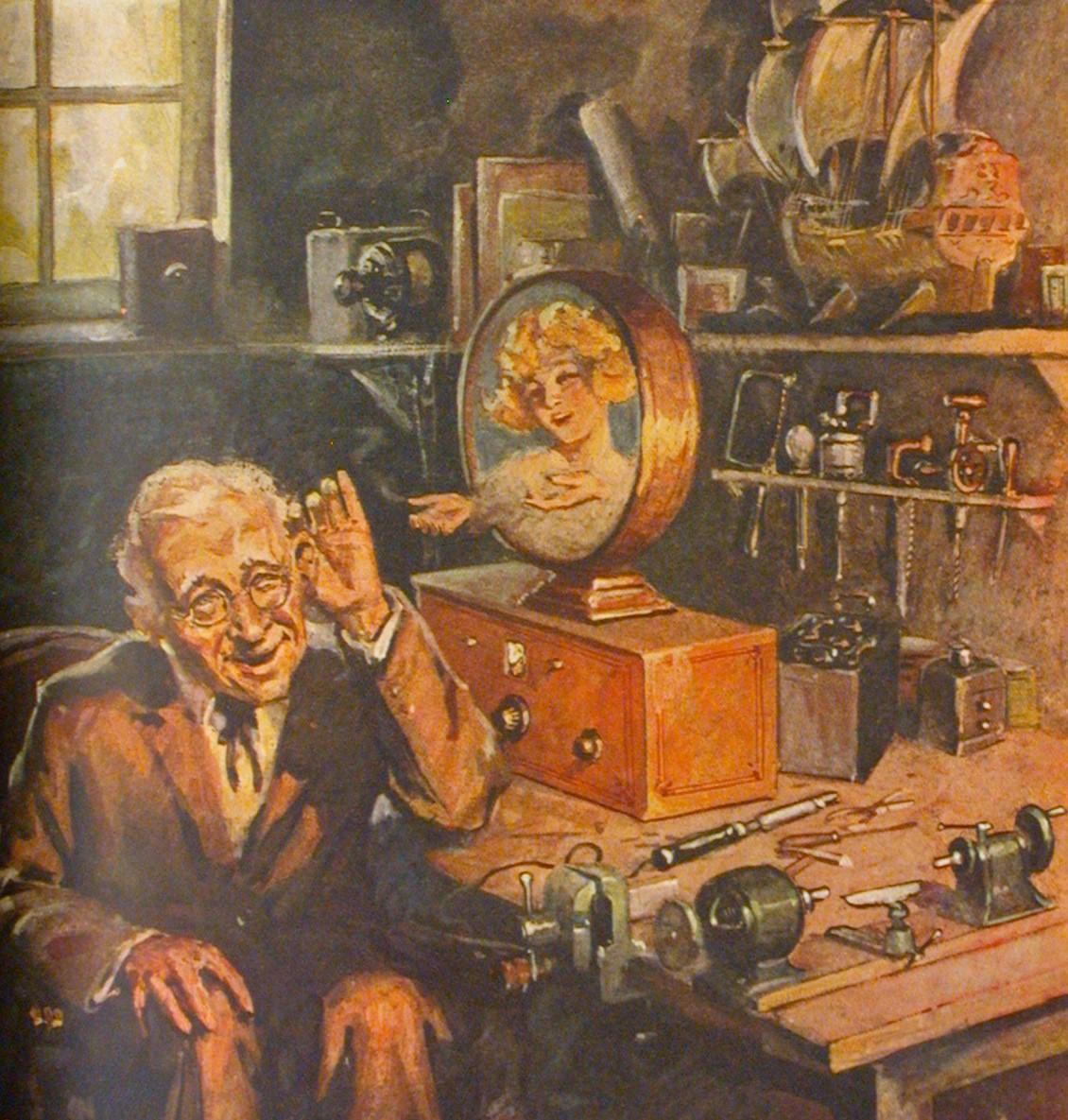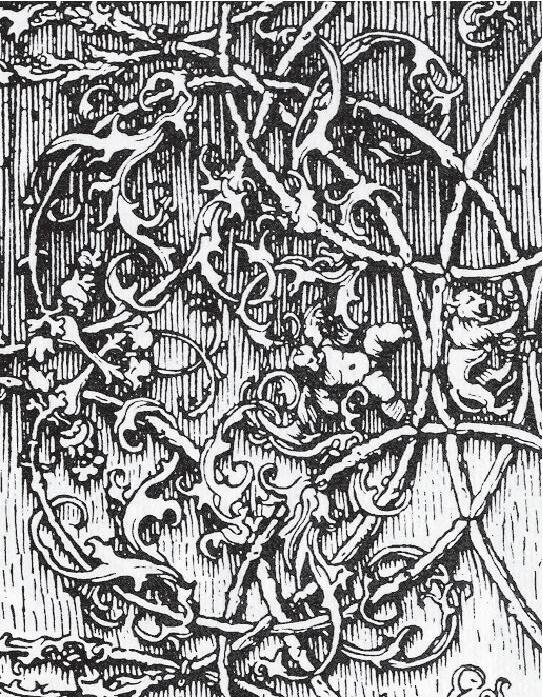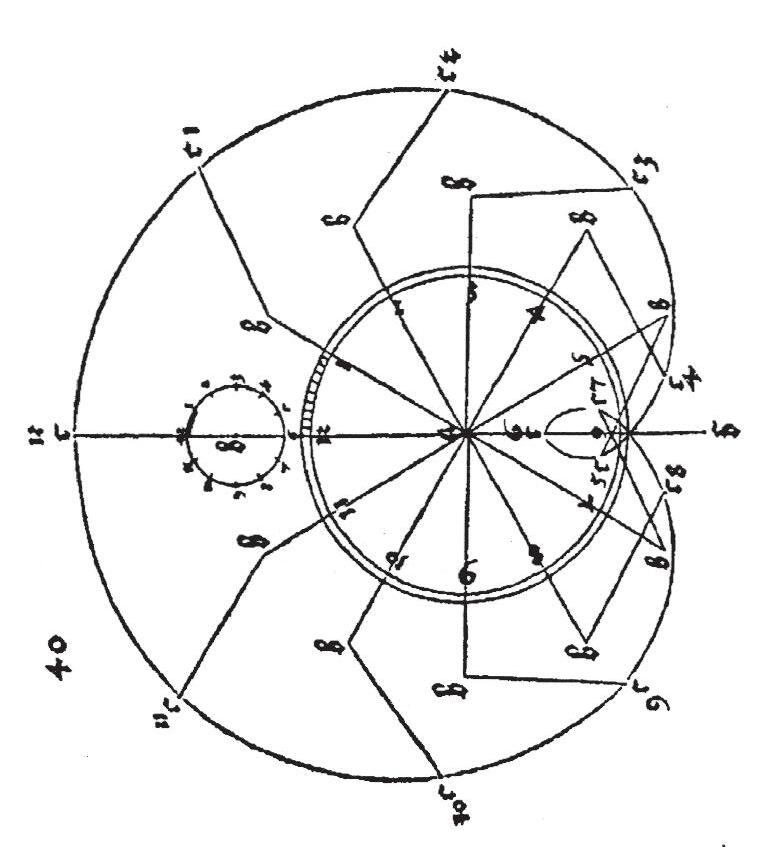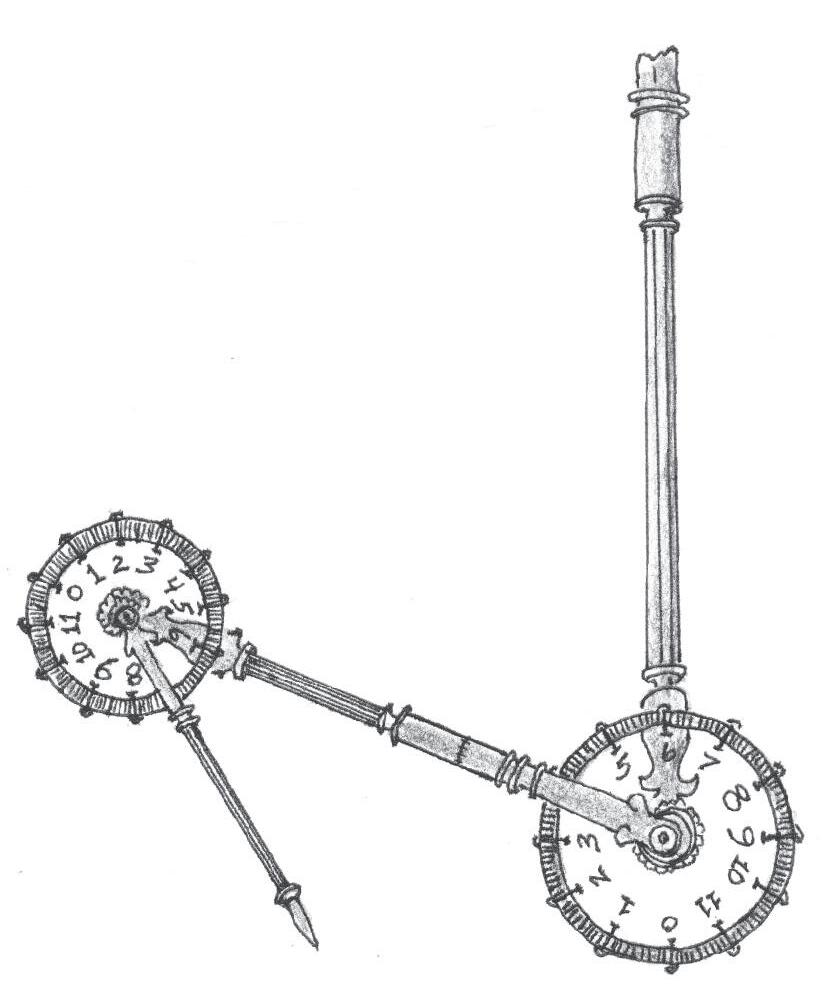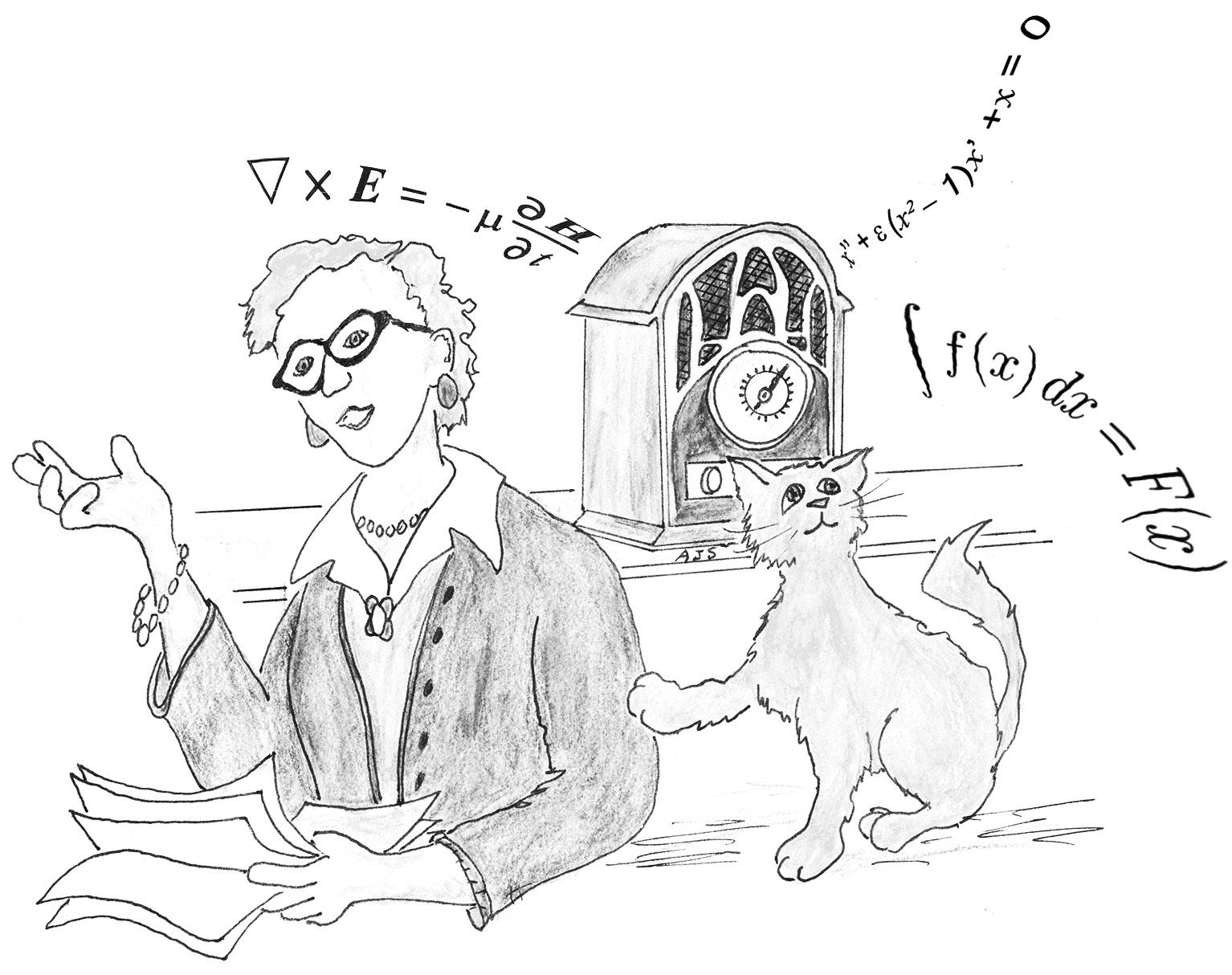Foreword to The Mathematical Radio
Andrew J. Simoson
One morning in January 2022, an unusual request appeared in my in-box: “It seems to me that the book simply demands an introduction by a mathematician, and I think you’re the perfect person to do that.”
The book refers to the one you might be holding at this moment— which, at my moment of processing the request, consisted of a few first-draft chapters. And the request was by its author, Paul Nahin. Upon scanning through those pages, and encountering Maxwell’s equations and extensive allusions to G. H. Hardy’s 1940 A Mathematician’s Apology, my heart missed a few beats. Having been recruited at sporadic semesters over the years by our physics department to teach their Electricity & Magnetism course, yes, I can derive the equations from first principles, but do I know their implications beyond the abstractions? And, yes, Hardy’s notions about pure mathematics were familiar to me, as they are to most if not all of you who have read thus far; but how does one say to a mathematical giant, excuse me, please, do you really believe what you said?
My response to Paul’s request is this threefold-sectioned foreword: (i) Who is Paul Nahin and why among the host of mathematicians did he ask me? (ii) What is the relationship between pure and applied mathematics, and how might we interpret Hardy’s claims about the chasm between the two? and (iii) Why is Paul’s book intriguing?
Who
Who’s your hero?
During my childhood summers, we neighborhood kids were almost always playing sandlot baseball. Each of us, when stepping to home plate, would announce—from names taken from our stash of baseball cards (available from a nearby shop at five for a nickel with a stick of bubble gum as well)—that we were so and so, and point
xii A n DR e W J. s IM oson
to the fences as did Babe Ruth1 who thereafter delivered the prophesied homerun. My favorite card was Harmon Killebrew. His name containing both harm and kill suggested to me that he could crush a ball. Moreover, I vaguely imagined that the person on Killebrew’s card wasn’t really Killebrew, but that he just pretended to be Killebrew— just as I pretended.
But no, heroes are real.
As I grew, my heroes changed. For example, one of my first submitted journal papers was rejected with an apologetic three-page self-typed personal letter from legendary Paul Halmos (1906–2006). In response to my first published paper came a letter from another mathematical god, analyst Walter Rudin (1921–2010), detailing how my results followed almost immediately from a well-known theorem.2 Wow! These immortals, as it were, deigned to communicate with mortals such as me.
Then, with increasing years and expanding library, I discovered Pliny the Elder (c. ad 23–79). Like the modern-day one-man Ripley’s believe-it-or-not repertoire, Pliny’s Natural History encyclopedia stretches for a million words, partitioned into 37 volumes.3 He cataloged both fantastical and actual discoveries. For example, for the former, he said that “when a mountain in Crete was cleft by an earthquake a [human] body 69 feet in height was found.” For the latter, of Eratosthenes’s calculation that Earth’s radius was about 4000 miles, he said, “it was achieved by such subtle reasoning that one is ashamed to be skeptical”; and of Hipparchus’s entire body of astronomical feats including solar-eclipse-data-driven calculations that the Moon’s distance was about 60 to 70 Earth-radii in the sky, he said, “Hipparchus can never be sufficiently commended.” Pliny himself— ever inquisitive—died from breathing residual noxious fumes while investigating the aftermath of the Mount Vesuvius volcanic eruption.
1 On sabbatical at Princeton in 1928, G. H. Hardy—an ardent cricketer from early childhood—wrote, “I read reports in the papers by the hour and worship Babe Ruth and Lou Gehrig [with] batting averages ranging from .387,” The G. H. Hardy Reader, MAA, 2015, pp. 132–133.
2 For his response to me, see Walter Rudin, Well-distributed measurable sets, Amer. Math. Monthly 90 (1983) 41–42.
3 Harvard University Press, 1949. For the three Pliny citations in this paragraph, see vol. 1, book II, pp. 239, 371, and vol. 2, book VII, section xvi, p. 553.
My modern-day Pliny the Elder hero candidate is Professor Emeritus Paul Nahin, a long-time electrical engineer. Well on his way to 37 volumes himself, Paul’s expository books are ostensibly written for a literate public who enjoy a blend of story, history, science, and mathematics. At the book fair of the 1999 national Joint Mathematics Meetings (JMM) convention in San Antonio, Princeton University Press’s booth featured Paul’s hot-off-the-press The Story of 1 . Beneath this display table was a healthy cache of the same, available for purchase. Curious yet ever frugal, I paged through the book and made a rare decision. I bought my first Nahin book and read it on the flight home.
A few years later, Paul, who just happened to review my first book, characterized it as a “darn good book.”4 Upon publication of a second, I requested that a copy be sent to Paul, perhaps hoping for even heartier commendation. But no, upon receiving the gift, Paul went much further. He wrote a thank you note—and thus began a friendship lasting to this day, in which we share our most recent offerings.5
What
Maxwell’s equations and Hardy’s abyss—these are the two elements that Paul weaves together in The Mathematical Radio. To summarize this latter phenomenon, we itemize Hardy’s claims from his Apology, the first two of which pertain directly to our question, and the remaining ones give insight into the first two items.6
1. Engineering is not a useful study for ordinary men.
2. There is the real mathematics of the real mathematicians, and there is what I call the trivial mathematics . . . which includes its practical application, the bridges and steam engines and dynamos.
3. A man’s first duty is to be ambitious.
4 In SIAM Review, 50:1 (2008) 191–192
5 I have the better of the deal, since his productivity is tenfold that of mine.
6 Hardy’s Apology with C. P. Snow foreword, Cambridge Univ. Press, 1967, pp. 61, 64, 66, 67, 70, 77, 117, 139.
4. Most people can do nothing at all well.
5. Mathematics is a young man’s game.
6. Exposition is for second-rate minds.
7. It is one of the first duties of a professor to exaggerate a little both the importance of his subject and his own importance in it.
Before examining the above list, we go back in time and then leap forward in varying incremental steps to specific episodes until the present date. We ask, When did we first have the luxury of having both pure and applied mathematics? Even as far back as the Pleistocene epoch, people have always used a little math so as to pay tribute or taxes, settle property disputes, and build safe structures. But beyond that, when did mathematics bifurcate into quasi-distinct knowledge fields of pure and applied? Somewhat arbitrarily, we submit that a meaningful answer is when we began explaining natural phenomena without reference to mumbo jumbo.
In this context, one of the first philosophers to do so was Thales (620–546 bc). Among Euclid’s collected propositions attributed to Thales is Proposition 26: If two triangles have angle-side-angle or have angle-angle-side in common then the triangles are congruent. This proposition, as the legend goes, is how Thales determined distances of ships from shore.7 In Figure 1, imagine that Thales T atop a coastal tower—whose base point A is directly below T sights ship S (using a larger-than-life compass-like instrument, one arm being a vertical pole and the other free to swivel and lock into position so as to align with his line of sight); whereupon Thales rotates the vertical pole so that the swivel arm now points to marker B (among many markers) along the visible coastline. Since ΔTAS and ΔTAB are congruent, then sea distance AS is coastal distance AB. Thales’s trick is both pure and applied geometry; it’s a general abstract theorem and untold specific instances of that truism.
Two hundred years later, purportedly emblazoned above the entrance to one of the world’s first great schools, Plato’s Athens Acad-
7 Euclid’s Elements, ed. Thomas Heath, vol. I, Dover Press, New York, 1956, pp. 35–36, 304–305.
FIGURE 1. Thales measuring a ship’s distance at sea, author sketch.
emy, was the motto,8 “Let no man ignorant of geometry enter here.” Plato (c. 429–347 bc) taught that “all the useful arts [such as making shoes] are reckoned mean,” and proposed that an ideal education consisted of studying (i) arithmetic, (ii) plane geometry, (iii) solid geometry, (iv) astronomy, (v) music, and (vi) philosophy.9 A product of this pedagogical tradition was Archimedes (287–212 bc). Most mathematicians believe—among the few opinions which we all might share—that Archimedes was among the greatest mathematicians of all time—perhaps on everyone’s top 10 list.10 Yet, he was also an incredible engineer. Witness Plutarch’s description of how Archimedes’s boast that, given a place to stand, he could move planet Earth itself, was put to the test by Syracusan King Hiero, who challenged
8 Scholars suspect that this inscription was figurative rather than one cut in stone. A more literal rendition is, “Let no one ignorant of geometry come under my roof,” as noted by Bernard Suzanne in “Plato and his dialogues” at https://www.plato-dialogues .org/faq/faq009.htm.
9 See Plato’s The Republic, ed. B. Jowett, The Modern Library, New York, no date, book VII, pp. 264–278. Plato’s last subject includes natural philosophy, or what is now called science.
10 Hardy said, “Archimedes will be remembered when Aeschylus is forgotten,” from the Apology, p. 81.
circle at sea level
Thales T
Ship S
Archimedes to launch “a ship of burden which could not be drawn out of the dock without great labour and many men,” whereupon,
[Archimedes, loading the ship] with many passengers and a full freight, sitting himself the while far off, with no great endeavour, but only holding the head of the pulley in his hand and drawing the cords by degrees, he drew the ship in a straight line, as smoothly and evenly as if she had been in the sea.
Yet Plutarch (ad 46–119) went on to say that Archimedes, as Plato believed before him and Hardy would believe long after him, “repudiated as sordid and ignoble the whole trade of engineering, and every sort of art that lends itself to mere use and profit.” Instead, Plutarch continued, Archimedes “placed his whole affection and ambition in those purer speculations where there can be no reference to the vulgar needs of life.”11 What are these purer speculations? My favorite is Archimedes’ Diophantine riddle of the Sun god’s cattle:
If thou are diligent and wise, O stranger, compute the number of cattle of the Sun, who once upon a time grazed on the fields of the Thrinacian isle of Sicily, divided into four herds of different colors white, black, yellow, and dappled. In each herd were bulls, mighty in number according to these proportions: the white bulls were equal to half and a third of the black together with the whole of the yellow, . . .
and so on, ultimately to give us a total of eight equations. Although Archimedes probably never solved his own riddle, the smallest possible answer is approximately 7.7603 × 104658 cattle.12 But just posing this puzzler is the very nature of pure mathematics. Now, we leap forward to shortly after the fall of Rome. During house arrest prior to execution, Boethius (c. AD 477–524) wrote The
11 As evidence that Archimedes held such a view of engineering, Plutarch simply said that Archimedes did “not deign to leave behind him any commentary or writing on such subjects [as engineering].” Nevertheless, Plutarch’s explanation suggests that Plutarch himself—and most likely a host of others—held this view. See Plutarch’s Lives, ed. Arthur Clough, Random House Press, New York, 1932, pp. 376–378.
12 David Bressoud and Stan Wagon, Computational Number Theory, Key College Press, Emeryville, CA, 2000, pp. 232–238.
Consolation of Philosophy, popularizing Plato’s educational slate, now partitioned into the quadrivium and the trivium: arithmetic, geometry, astronomy, music, grammar, rhetoric, and logic. All this material focused on pure rather than applied knowledge, at least in theory.
To illustrate a study item from, say, the pure field of arithmetic, Figure 2 is my adaptation of a puzzle from Boethius’s De Arithmetica, 13 which was his rough translation of a Greek manuscript of Nicomachus of Gerasa (ad 60–120). Imagine that the gray square
13 Boethius’s book was “the source of all arithmetic taught in schools and universities for over a thousand years,” Dorothy Schrader, De Arithmetica, Book I, of Boethius, Math. Teacher, 61:6 (1968) 615–628.
FIGURE 2. An arithmetic puzzle from Boethius’ De Arithmetica
is a 4 × 4 matrix A, with cell entries aij in row i and column j, where i and j go from 1 to 4, and that the integers are written in Roman numerals.14
Each of the integers outside the gray square can be obtained in two distinct ways by arithmetic operations on the integers inside the gray square. In particular, we allow equality between (i) the sum of two integers, (ii) the product of two integers, (iii) doubling an integer, and (iv) squaring an integer. Can you find them? Moreover, how are the integers themselves within the gray box related to each other? For example, from A’s row-3, we have a31 × a34 = 6272 = a32 × a33; and a31 × a33 = 3136 = (a32 )2. Unimpressed? Recall that these integers are in Roman numerals,15 a system never designed for computational purposes. Instead, those computations were performed using an abacus or a counting board with movable tokens. To solve our puzzle, a student would translate, say, two desired numerals from Roman (or Greek) into proper arrangement onto one of these instruments; manipulate the tokens thereon, performing the desired operation; and translate the result into Roman numerals. Ironically, such puzzles as this one develop students’ facilities with the abacus—useful skills which a potential employer might prize—but the pure aim of the puzzle was to develop insight into the nature of numbers, so as to discover more (interesting yet arguably useless) relations within number theory.
Next, we leap forward in time to shortly after the bombshell technological innovation of the printing press. My favorite artist of all time is Albrecht Dürer (1471–1528). His 1525 four-volume The Art of Measurement with Compass and Straightedge was one of the first printed mathematical texts in German. Therein, he introduced a construction technique for a general family of curves known as the trochoid.
Figure 3c is a snippet from Dürer’s woodcut “The Circumcision” showing what is now called a limaçon which Dürer constructed
14 To represent the integer ten thousand, linguistic anthropologist Stephen Chrisomalis says that the Romans used the symbol , explaining that the Roman symbol for one thousand in the time of the Punic Wars was initially written as , and that over time it “opened up from the bottom to look like an M,” from Stephen Chrisomolis, Reckonings, MIT Press, Cambridge, MA, 2020, p. 39.
15 At least up until after the days of Fibonacci’s 1202 Liber Abbaci introducing the fantastic computational capabilities of the Indo-arabic number system.
FIGURE 3. Albrecht Dürer’s trochoid family of curves.
using a modified compass.16 To use the instrument, one sets the compass down at point O on a page; arranges arms A and B as desired, so determining angles θ and ϕ; defines step-size increments for angles θ and ϕ at the joints O and Q; advances arms A and B by those angle step-sizes and marks the page at point P, and repeats. One hundred years later, geometers such as René Descartes (1596–1650) transformed Dürer’s mechanical procedure into algebraic terminology and onto coordinate systems, so much so that the realm of mathematics, which had been classical geometry with a bit of algebra, has become algebra with a bit of classical geometry.
The point of this story is that Dürer applied a mathematical idea to help create and market art. Once this primitive idea percolated into what we might call the mainstream of mathematics, aha, the mathematical community delighted in making ever more fanciful curves.17 This dynamic between pure and applied repeats itself time after after time. Upon which shall we focus? If you are someone like Stephen Wolfram of Mathematica fame, why not fine-tune all the world’s great mathematical algorithms for universal usage into a convenient computer algebra system (CAS) and make a fortune along the way. However, if you are someone like Grigori Yakovlevich Perelman, who resolved the 1904 Poincaré conjecture and nevertheless turned down the million-dollar Clay Millennium Prize, then you might be like Archimedes, who, in the sack of Syracuse,
was intent upon working out some problem by a diagram. In [the midst of Archimedes’ calculations], a soldier commanded him to [move]. Declining to do so before he had worked out his problem, the soldier, enraged, drew his sword and ran him through.18
16 Figure 3a is my sketch of Dürer’s modified compass. Figure 3b is figure 40 from book 1 of Dürer’s Underwesung der Messung, Nuremberg, 1538. Figure 3c is cut 184 from The Complete WoodCuts of Albrecht Dürer, ed. Willi Kurth, Crown Publishers, New York, 1941. For further details on how Dürer manipulated his compass to construct the trochoid in the “Circumcision” see Chapter VII, pp. 163–187 of my book, Voltaire’s Riddle, Mathematical Association of America, 2010.
17 To explore one mathematician’s top 10 curves of all time, see Julian Havil, Curves for the Mathematically Curious, Princeton University Press, Princeton, NJ, 2019.
18 See Plutarch’s, p. 380.
We make just one more leap, this time to the dawn of the twentieth century. At the end of his life, Alfred Nobel (1833–1896), who had made a fortune marketing explosives, was faced with distributing that wealth, ultimately choosing to endow monetary prizes celebrating extraordinary practical discoveries. In 1901, the first prizes19 were awarded in physics, chemistry, medicine, literature, and peace, but not mathematics. Why? The bottom line is everyone knows that, whether we like it or not, pure mathematics is impractical. Tracing mathematical development through time, we see that it has continually bifurcated, spawning the disciplines of engineering, accounting, physics, economics, statistics, operations research, computer science, communications technology, and artificial intelligence. Mathematics jettisons, as it were, all the practical aspects of its success, so as not to thwart its grand quixotic quest to understand in full the elusive abstractions of number and space. To personify mathematics, imagine that mathematics is Diogenes, and the world view of what is important is Alexander the Great. One afternoon, approaching from the west, Alexander asked Diogenes, who was drawing figures in the sand, what he could do for him; and Diogenes replied, “Just move out of the sunlight.”20
Now, I’ve exaggerated a bit, more or less in the spirit of Hardy’s claim (7). Yet, it’s hoped that these last few paragraphs have set a foundation upon which to discuss his other claims.
Let’s consider points (1) and (2) about engineering. Hardy coauthored about 100 papers with John Littlewood (1885–1977), whose comments often enlighten Hardy’s observations, such as this recollection: One day at Trinity College of Cambridge University,
in 1912, it was proposed that the Engineering students should be taught some real mathematics by the mathematical staff. I asked F. J. Dykes, the Lecturer in Engineering, what he would like me to select; all he said was: Give the buggers plenty of slide rule. 21
19 In 1968, prizes were also extended to economics.
20 Paintings and sculptures of this classic interaction often depict Diogenes in a drunken stupor, but I like to think he was doodling.
21 J. E. Littlewood, Littlewood’s Miscellany, Cambridge University Press, 1968, p. 142.
I used the slide rule for all my college physics courses in the early 1970s, but teaching the slide rule in the early twentieth century is like teaching the abacus and the counting board back in the days of Boethius. Yet, Professor Dykes had a valid point, namely, his students needed help at that fundamental level! When my older son, with a master’s in mechanical engineering, landed his first position at General Electric, he was placed into a multiyear training program in which all the new recruits were taught afresh the ins and outs of the trade. Part of this trade is to realize that the company must be commercially competitive—and while experimentation with new ideas is encouraged—make sure you all follow the company line. This same spirit was much in vogue, say, in the days of Johannes Gutenberg (c. 1400–1468) and the printing press; as his team was trying to massproduce copies of the Bible, Gutenberg continued tinkering with engineering improvements to the press, so much so that his services were terminated shortly after the first few of about 200 complete copies of holy writ rolled out the door. This “it’s-good-enough” production-line approach to exploring knowledge, I believe, formed much of the target for Hardy’s denigrating remarks about engineering. When Hardy used the word useful22 in a positive sense, he classified as useful much of college mathematics as well as electricity and magnetism and fluid dynamics. Hardy’s main point: “What is useful above all is technique, and mathematical technique is taught mainly through pure mathematics.” When Hardy used the word pejoratively, he concluded
If useful knowledge is . . . knowledge which . . . contributes to the material comfort of mankind, then the great bulk of higher mathematics is useless.
Those are blunt and harsh words from a master mathematician who was heartily convinced of both the innate value and ridiculousness of a liberal arts education! In an Apology critique, dynamical systems professor Daniel Silver’s advice for those reading Hardy’s Apology, is to remember “that Hardy enjoyed teasing his audience,” citing George Pólya who recalled, “Hardy liked to shock people mildly by 22 Hardy’s Apology, p. 133–135.
stating unconventional views . . . because he liked arguing.”23 For example, listen to Hardy as he closed his 1928 Josiah Gibbs lecture in New York City:
A month’s intelligent instruction in the theory of numbers ought to be twice as instructive, twice as useful and at least ten times as entertaining as the same amount of “calculus for engineers.”24
Such strident language may charm some, yet it fails to amuse everyone.25 In a 1941 review,26 Frederick Soddy, a 1921 Nobel laureate in chemistry, called Hardy’s Apology “cloistral clowning.” Despite this caustic view, consider the robust nature of Soddy and Hardy’s relationship: At the end of his review, Soddy mentioned that during a dull faculty meeting in 1931, he passed a note to Hardy asking for the sum on the left of equation (1).
“In an incredibly short space of time”—and while the meeting was yet in progress—Hardy passed Soddy the rest of equation (1). As a more thoughtful commentary, here’s one by Hardy’s friend Norbert Wiener:
When I returned to Cambridge after working with engineers for many years, Hardy used to claim that the engineering phraseology of much of my mathematical work was a humbug, and that
23 “In defense of pure mathematics,” Sigma Xi. 103:6 (2015) 418–421.
24 From Hardy’s Josiah Gibbs Lecture, New York City, 1928, published as G. H. Hardy, An introduction to the theory of numbers, Bulletin of the AMS, 35:6 (1929) 778–818. The lecture is also reprinted in The G.H. Hardy Reader.
25 For an exhaustive compendium and commentary on extant reviews of Hardy’s Apology and for Hardy’s allusions therein, see Alan J. Cain’s An Annotated Mathematician’s Apology available at https://ia800904 us archive org/9/items/hardy annotated /hardy annotated.pdf.
26 See his “Review of G. H. Hardy, A Mathematician’s Apology,” Nature 147:3714 (4 Jan. 1941) 3–5.
xxiv A n DR e W J. s IM oson
I had employed it to curry favor with my engineering friends at MIT. He thought I was really a pure mathematician in disguise, and that these other aspects of my work were superficial. This, in fact, has not been the case.27
The physicist turned novelist C. P. Snow, who had read Hardy’s original 1940 Apology manuscript prior to publication, and who wrote the Apology’s foreword appearing in editions since 1967, echoed these thoughts in his 1959 Rede lecture:28
Pure scientists have by and large been dim-witted about engineers and applied science. Their instinct was to take it for granted that applied science was an occupation for second rate minds. I say this sharply because thirty years ago I took precisely that line myself.
Paul is like-minded and—using a clever literary device that may help engage the mathematical community with the mathematics of radio transmission and reception—has written this book as if he were arguing his case before Hardy. I can almost imagine Wiener using Paul’s book to rebut points (1) and (2) of the Apology. And Paul ably and credibly continues Snow’s counterargument as you will discover while reading The Mathematical Radio.
Since I’ve come this far in offering observations about the Apology, let me comment on the remaining enumerated Hardy points. Is mathematics only a game for young men and women, point (5)? Hardy said: “I do not know of an instance of a major mathematical advance initiated by a man past fifty.”29 Yet,
Littlewood remained active in mathematics even at an advanced age: his last paper was published in 1972, when he was 87. One of his most intricate papers, concerning Van der Pol’s equation and its generalizations, was written when he was over seventy. 110 pages of hard analysis.30
27 The G. H. Hardy Reader, p. 158.
28 Available at https://metode cat /wp - content /uploads /2014 /07 /Rede -lecture -2 -cultures.pdf.
29 Hardy’s Apology, p. 72.
30 Littlewood’s Miscellany, p. 15–16.
Paul Erdős (1913–1996) toured the world, visiting one university after another like a Johnny Appleseed planting trees of joint work around the globe, until nearly the end. At a January 2013 Joint Mathematics Meetings in San Diego, Richard Guy (1916–2020) gave a talk on continued fractions. To our packed room of about 500, he introduced himself, “You didn’t, most of you, come to hear math, but to see a dinosaur.” But really, most of us were thinking, No, we came to see a dinosaur and to hear some math.
Ambition, is it truly necessary, point (3)? Hardy reminds us that he came to mathematics because “I wanted to beat other boys [at exams].”31 Littlewood, too, had this competitive element. As Belá Bolobás describes:
In 1971, a paper was submitted claiming a proof of RH [the Riemann hypothesis]. [Both Littlewood and I examined the proof and] after a few hours of painstaking work he [Littlewood] was relieved to find a mistake.32
That is, Littlewood was hoping that he himself would be the one to prove RH! Littlewood, however, acknowledged that not everyone is similarly wired. Of Edmund Landau (1877–1938), Littlewood recalled: “It was said round 1912 that it gave him [Landau] the same pleasure when someone else proved a good theorem as if he had done it himself.”33 If doing mathematics were like playing baseball or cricket, some of us would be all-stars, and others, like me, would be perhaps, at best, umpires. The former require a killer instinct, and the latter, just plain obstinacy. What about point (6)? With respect to writing, Hardy confessed in a letter to Bertrand Russell:
I wish you could find some tactful way of stirring up Littlewood to do a little writing. Heaven knows I am conscious of my huge debt to him. But, in our collaboration, he will contribute ideas and ideas only: and that all the tedious part of the work has to be done by me. If I don’t, nothing would ever get published.34
31 Hardy’s Apology, p. 144.
32 Littlewood’s Miscellany, p. 16.
33 Littlewood’s Miscellany, p. 125.
34 The G. H. Hardy Reader, p. 155.
That is, Hardy wrote well, and was proud of his ability to put words together. The mathematical community has fully acknowledged that talent. To cite just one example among many: Hardy’s 1928 Josiah Gibbs lecture won the 1932 Chauvenet Prize for best expository article in mathematics as published in North America. So Hardy saying that “exposition is for second-rate minds” is like Babe Ruth saying, “Anyone can swing a bat.” Yet, stellar writing is a rare gift.
Finally, excellence: is it true that few, if any of us, can do anything well, point (4)? My two-year old grandson can walk upright and utter complete sentences! Wow, I’m impressed. That’s my standard for excellence. But suppose you are a Leonardo da Vinci. His deathbed last query to his assistant was, “Dimmi, dimmi se mai fu fatta cosa alcuna,” that is, “Tell me, tell me if anything ever got done.”35 Oh my, God bless us all.
Why
What about The Mathematical Radio itself? Why might it appeal to you? Imagine that before Paul begins his “engineer’s reply to Hardy,” Hardy opens their discussion with this salvo.
A little chemistry, physics, or physiology has no value at all in ordinary life. We know that the gas will burn without knowing its constitution; when our cars break down we take them to a garage; when our stomach is out of order, we go to a doctor or a drugstore. We live either by rule of thumb or on other people’s professional knowledge.36
That is, do people—and that includes mathematicians—really want to know how GPS works, how search engines process information, how phone calls reach someone on the other side of the world within seconds, or how the radio works? Every one has a casual interest, but after seconds into jargon-laden explanations,
35 W. A. Pannapacker, How to procrastinate like Leonardo da Vinci, Chronicle Review, 55:24 (2009) B4 at https://www.chronicle.com/article/how-to-procrastinate-like-leonardo -da-vinci/.
36 Hardy’s Apology, p. 118.
our attention fades. Littlewood found that he himself was prone to this failing:
I have tried to learn mathematics outside my fields of interest; after any interval I had to begin all over again.37
Yes, we all wrestle with new-to-us compressed information and ideas. For example, consider the typical hour-long plenary talk at mathematics conventions: the tacit rule of thumb for such events is that the first twenty minutes is for an interested audience, the next twenty is for the expert, and the last twenty is “hang-on-to-your-hat” territory.
But suppose your interest in the radio is piqued. Paul promises an exposition without engineering jargon—yet sometimes he cannot resist and sneaks in phrases like “magnetic- coupled center-tapped transformers,” “carrier signals,” “impedance inverters,” “superheterodyne receivers,” and, my favorite, “Goldilocks frequencies”38 perhaps because he is so deeply familiar with those terms. Although I teach undergraduates differential equations along with Maxwell’s equations, my insight into applications of electricity and magnetism is limited. The following are two analogies describing this tension or disconnect. Consider first the man blind from birth who was touched by Jesus in Mark 8:24 (KJV); whereupon the man exclaimed, “I see men as trees, walking”; after a second touch, the man “saw every man clearly.” In this analogy, I am the blind man—somewhat oblivious to what electrons can do—and Paul is the master. To understand clearly, I need a second touch, as it were, from an engineer with a lifetime of manipulating both abstract equations and concrete circuits of resistors, capacitors, inductors, vacuum tubes, and transistors.
As a second analogy, consider Figure 4, my sketch of Mary Cartwright (1900–1998)—a PhD student of Hardy’s and a multiple coauthor with Littlewood—and of a cat,39 and of a radio broadcasting equations. In this analogy, I am the cat, somewhat befuddled and vaguely alarmed by equations streaming from the radio, and Paul is a Mary figure, clearly explaining the details. In particular, the differ-
37 Littlewood’s Miscellany, p. 191.
38 Frequencies that are neither too low nor too high.
39 Paul confesses to being a “long-time ‘staff person’ for multiple cats,” expressing the idea that cat owners are servants of the cats.
Mary Cartwright and cat with radio.
ential equation to the right of the radio is the Van der Pol equation of radio fame that was studied extensively by both Cartwright and Littlewood and which Paul derives afresh in Chapter 1. To the left of the radio is Maxwell’s third equation, which Paul interprets as saying that “a time-varying magnetic field creates an electric field,” giving rise to a displacement current, which “is what gives life to radio.” As he explains, solving this third equation generates the wave equation. That is, electrons involved in oscillating current somehow, and almost magically for someone with my depth of understanding, shed electromagnetic radiation which can be received and induced back into an oscillating current to be transformed into sounds of music, news, and story. Such are the epic contents of The Mathematical Radio.
One way to read Paul’s book is to start on the first page and continue to the last. However, in the spirit of Merlin, a wizard at Camelot, who is imagined to have lived backward in time, another way is to read the appendix first, so giving a warmup to Maxwell’s equations and their significance. Then, read Chapter 6, a colorful history of the radio
FIGURE 4.
as it affected and transformed our culture. Chapter 1 is a terse review of a typical undergraduate differential equations course involving solution techniques for solving second-order differential equations, including Laplace transforms, Heaviside’s step function, and Dirac’s impulse function. Chapter 2 follows with Fourier transforms and convolutions. Chapter 3 explains AM radio, wherein waves are modulated in amplitude. In Chapter 4, Paul uses the Hilbert transform—so named by G.H. Hardy!—to explain single-sideband, super-encrypted, ultra-high-frequency radio—which is “the technology behind the ultra-top-secret trans-Atlantic radio/telephone link used” by Churchill and Roosevelt during World War II. In Chapter 5, Paul uses Bessel functions to explain FM radio, wherein waves are modulated in frequency. If you enjoyed the sequence of steps in equation (1), you’ll experience, in the same spirit, copious mathematical derivations of why the radio works.
Along the way, you’ll learn (i) why radio transmitting antennas must be so high; (ii) why electrons in a current move at snail’s pace; (iii) why analyzing the Van der Pol equation shows that negative resistance in a circuit can exist and why “the entire development of modern electronics is based on that fact”; (iv) why in a nuclear war, “it is almost certain your car radio with its solid-state chips . . . will no longer work—but old-time radios with vacuum tubes will”; and (v) a host of other fun technical and historical details. As you read you’ll discover that the book—at least the first five chapters— reads like a math book. Take your time. Pace yourself. You may find yourself, like Littlewood and me, as well, going back and rereading passages before pressing on. The Mathematical Radio unpacks much interesting mathematics. Furthermore, if you are a Nahin fan, you will soon conclude that this book—surpassing by far any of his previous expositions with respect to mathematical sophistication— encompasses a lion’s share of what he has been seeking to understand and explain ever since, as he describes, “when I was a 16-year-old kid full of excitement about electrons and math.”
March 2022
